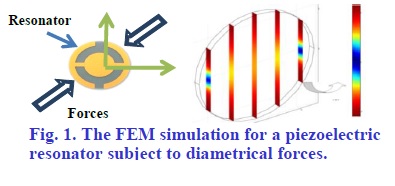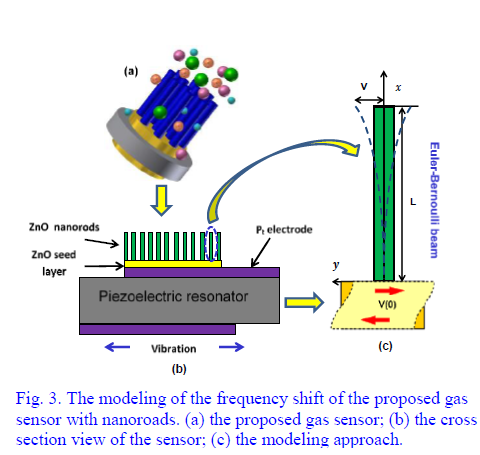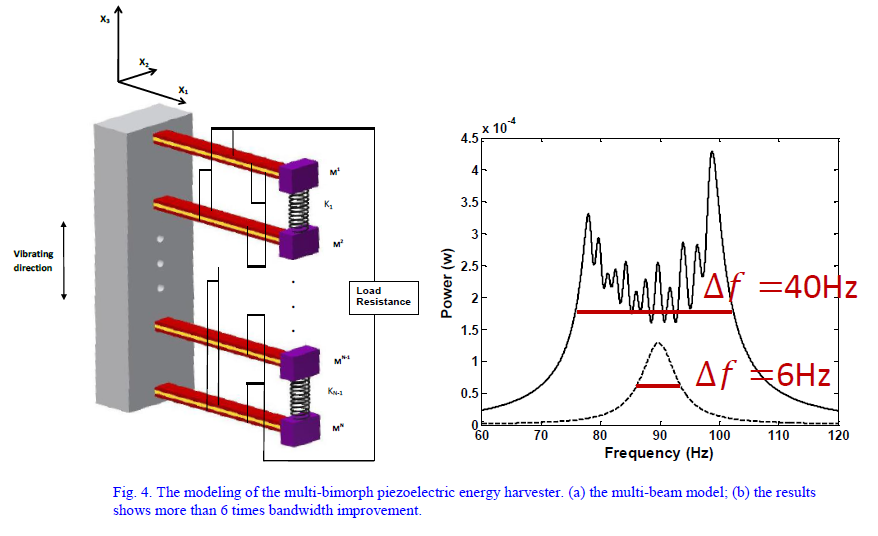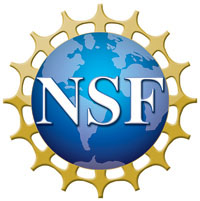Research
Novel Piezoelectric Resonant Sensing Mechanism

Harsh environmental conditions, including pressure and temperature extremes, vibration, shock, radiation, chemistry (acids, bases), biological domains, and corrosion attacks, pose a significant challenge for conventional sensing devices. Most sensing elements on the market cannot survive in harsh environments. However, accurate monitoring of pressure and temperature in extreme environments is critical to several modern industrial segments, including the manufacturing, automotive, aerospace, gas turbine, nuclear power, gas and oil exploration, and petrochemical control sectors. As a step toward resolving this challenge, we used a new piezoelectric material which can keep its piezoelectricity at 1400 C as a sensing element. In addition, we discovered a special cut angle that can enable the dual-mode sensing capability; one mode is used to detect high temperature and the other to detect pressure based on force frequency effect (Fig. 1), so that a high-accuracy measurement of temperature and pressure can be performed with a single sensing element. Furthermore, we used a thermoelectric module and vibration energy-harvesting module to harvest the energy from the harsh environment to realize the complete self-powered piezoelectric resonant sensor for harsh environment sensing.
Design of Advanced Piezoelectric Resonator

As essential components of military electronics systems, crystal resonators are always in need of improvement with respect to new materials and/or new designs. However, resonators in missiles and airborne radar usually are subject to harsh environments such as vibration and shock, as well as temperature variations. The resonant performance is degraded in this harsh environment. To resolve this critical issue, we investigated the influence of a variety of biasing fields on crystal resonator performance, including the force-frequency effect, electroelastic effect, drive-level dependence (Fig. 2), and force-velocity effect for the SAW (Surface Acoustic Wave) resonator. The combination of our experiment and modeling work will lead to software for calculating the basic vibration characteristics, the frequency-temperature behavior, and the acceleration sensitivity of the resonator given the specific cut of a crystal. When new materials and resonator designs are considered, the software will allow efficient optimization of resonator design, quick prediction of system behaviors, and implications for system performance. It will make possible the rapid benchmarking and early evaluation of system performance analyses. The research will greatly improve the efficiency of the design cycle of military electronic systems.
Energy Harvesting Nanorods-Enhanced MEMS Gas Sensor

The Energy Information Administration estimates that 67% of energy generated in the U.S. is from the fossil fuels including coal, petroleum, and natural gas. The combustion of fossil fuels accounts for 80% of greenhouse gas emissions in 2010 in the United States and produces other air pollutants, such as nitrogen oxides (NOx), carbon monoxide (CO), and ammonia (NH3). Advanced gas sensors for in situ monitoring and real-time control of combustion dynamics are urgently needed for implementation of high-efficiency and low-emission combustion technologies. The group is collaborating with scientists in Virginia Tech.,The University of South Carolina and GE Global Research center to investigate a novel self-powered piezoelectric MEMS gas sensor, which can detect gas concentrations of key emission gas species such as NOx, CO, and NH3 in harsh gas turbine environments. The self-powered MEMS gas sensing system will realize the rapid detection and quantification of gas species in high temperatures and thus revolutionize combustion processes, enabling in situ monitoring and close-loop feedback control in gas turbines. The proposed gas sensing technology will also have broader applications such as emission control of vehicles, sensing and control of coal-fired power plants, and monitoring of chemical production, metal cast and glass manufacturing processes.
Wide-Band Piezoelectric Energy Harvesters

The rapid growth of remote, wireless and MEMS (Micro Electro-Mechanical System) devices recent have motivated the development of a self-powered system that can replace traditional electrochemical batteries. Piezoelectric energy harvesters are ideal for capturing energy from mechanical vibrations in the ambient environment. Numerous studies have been made of this application of piezoelectric energy conversion; however, the narrow frequency operation band has limited its application to generate useful power. We have designed a wide-band energy harvester with an array/matrix of piezoelectric bimorphs connected by springs based on the 1D piezoelectric beam equations. The predicted result shows that the operation frequency band can be enlarged significantly by carefully adjusting the small end masses, length of the beam and spring stiffness. The results provide an important foundation for future broadband energy harvester design.
Sponsors





